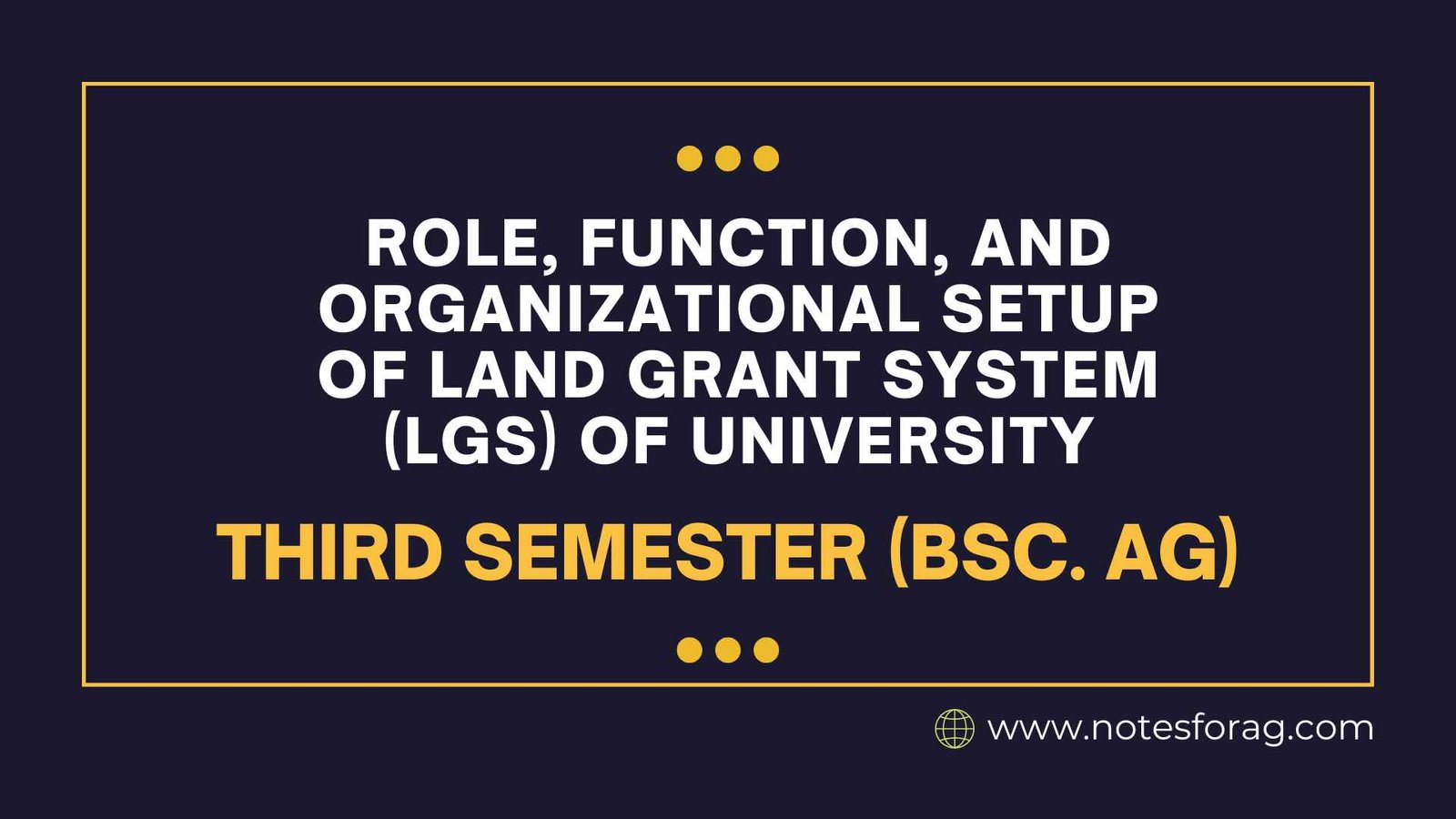The Land Grant System (LGS) of universities in the United States is a unique educational model designed to promote higher education, research, and public service, notably in agriculture, science, and engineering. The Morrill Acts of 1862 and 1890 established the system by providing states with federal land to fund the building of universities. These institutions, known as Land-Grant Universities, play an important role in furthering education, research, and extension.
Table of Contents
Role of the Land Grant System (LGS)
The primary role of the Land Grant System is to:
- Promote education: Provide accessible and inexpensive higher education, primarily in agriculture and mechanical arts, with later expansion into subjects such as engineering, home economics, and social sciences.
- Advanced research: Conduct cutting-edge research in agriculture, food security, rural development, environmental sustainability, and technology, among other topics.
- Support extension and outreach: Facilitate the transfer of information and technology from universities to the general public, particularly rural communities and farmers, through extension programs. This involves training, consulting, and providing answers to local concerns.
Functions of the Land Grant System
The LGS is based on three interconnected pillars, commonly known as the “three-fold mission” of teaching, research, and extension:
1. Teaching:
- Land-grant institutions offer formal education and degree programs to students. Their historic focus has been on agriculture, mechanical arts, and other practical sciences, however the scope has expanded throughout time.
- These colleges seek to provide accessible education to a broader range of people, particularly those from rural and working-class backgrounds.
2. Research:
- Land-grant institutions are pioneers in agricultural and scientific research, performing studies on real-world issues such as crop development, pest management, climate adaptability, and population health.
- They run Agricultural Experiment Stations, which conduct applied research to find practical answers to agricultural and environmental problems.
3. Extension:
- Extension services are outreach initiatives that convey knowledge directly to the community, primarily farmers and rural residents. The Cooperative Extension System is a collaboration between land-grant colleges and federal, state, and municipal governments that aims to share information through seminars, field demonstrations, and publications.
- Extension agents assist farmers in putting study findings into practice, thereby increasing productivity, sustainability, and economic viability.
Organizational Setup of the Land Grant System
The Land Grant System’s organizational structure consists of three major components: academic units, research arms, and extension services.
A. Academic Structure.
- Colleges and departments: Land-grant institutions have colleges for agriculture, engineering, veterinary science, and natural resources. These colleges provide degree programs and are responsible for educating students in a variety of fields.
- Faculty & Staff: Professors and researchers at these universities blend teaching, research, and service responsibilities, helping to further the land-grant system’s educational and outreach objectives.
B. Research Components.
- Agricultural Experimental Stations: Most land-grant institutions oversee state-funded agricultural research stations, where applied research is carried out. The findings of these research are intended to address local agricultural issues.
- Federal and State Funding: Research activities are frequently supported by government grants, state money, and business collaborations, allowing land-grant colleges to contribute to scientific advances in agriculture and other fields.
C. The Cooperative Extension System
- Extension Agents: Land-grant institutions send out extension agents to work directly with farms, community groups, and local businesses to offer research-based information. They plan workshops, field days, and one-on-one consultations.
- County offices: Many land-grant institutions operate local extension offices in each county or district, providing targeted assistance to farmers, rural communities, and enterprises.
- Partnerships: The Cooperative Extension System operates through federal, state, and local collaborations. The USDA (United States Department of Agriculture) provides federal leadership and financing, while state and local governments provide operational assistance.
Frequently Asked Questions
What types of academic programs are offered at Land Grant Universities?
Land-grant universities provide a diverse range of academic programs, such as agriculture, engineering, environmental science, veterinary medicine, and home economics. These programs place an emphasis on practical, research-based education that addresses real-world problems.
What is the main role of Land Grant Universities?
Land Grant Universities’ primary goal is to provide accessible education in agriculture, engineering, and other practical sciences, conduct research that addresses societal and agricultural challenges, and deliver outreach programs to benefit communities, particularly farmers and rural areas.
Related Articles

